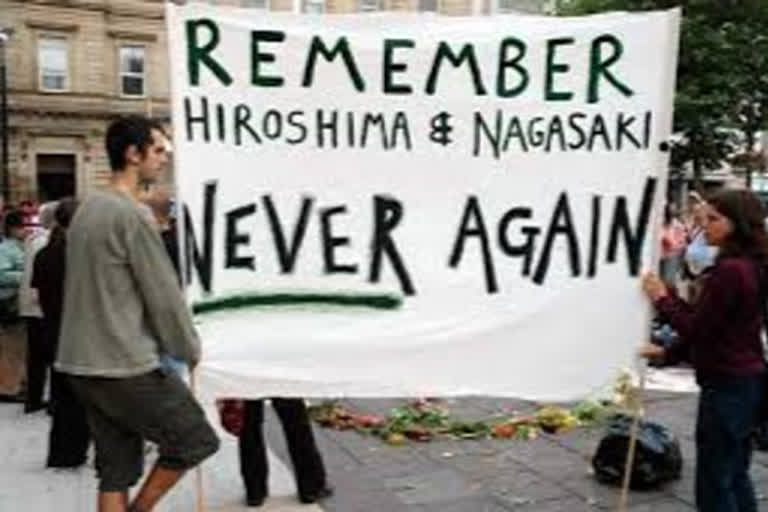Hyderabad:The 75th anniversary of the dropping of the first atomic weapon on Hiroshima will be observed on Thursday, August 6 this year and it is a matter of considerable satisfaction that there has been no further use of the nuclear weapon after Hiroshima-Nagasaki in August 1945. It was estimated that more than 120,000 innocent Japanese citizens were killed in this nuclear holocaust and many more terminally scarred. In that barren radioactive graveyard that emerged out of the mushroom cloud, it became a tragic truism that the living envied the dead.
75 years have been traversed uneasily since 1945 and after a fumble (during the 1962 Cuban missile crisis) it was a combination of strategic prudence among the major powers – then represented by the USA and the former USSR – combined with luck and some admirable restraint when it mattered most that allowed the world to reach this milestone. No second use of the dreaded ‘nuke’ since Nagasaki was also bombed on August 9, 1945.
However given the prevailing global nuclear scenario, it is difficult to be optimistic that the world will reach the 80th anniversary of Hiroshima with this record unblemished. One of many tangled strands is the latest development – a confidential UN Report submitted to the UN Security Council (UNSC) on Monday (Aug 3) which noted that North Korea (deemed to be a nuclear deviant) has “probably developed miniaturized nuclear devices to fit into the warheads of its ballistic missiles.”
While the veracity of this report will no doubt be examined by the UNSC ( which body India will join as a non-permanent member in January 2021 ), the steps taken by Pyongyang to ensure its own security in a very turbulent region are only the tip of the iceberg. The world’s most powerful and politically salient nations ( the five UNSC members) and the most prosperous (G 20 ) still rely on the nuclear weapon to ensure their security and the doctrinal underpinning is MAD – mutually assured destruction.
Read:US-Taliban peace deal: Implications for India
At a cognitive level, national security is perceived to have been assured by assuaging complex insecurities in the WMD (weapons of mass destruction ) domain by first acquiring and then increasing the number of nuclear weapons in the inventory. More is deemed to be better if less can provide the same index of security and the quest for sufficiency even among the major powers in the nuclear realm remains elusive. To that extent the insecurity correspondence between North Korea and its more pedigreed nuclear interlocutors (USA, Russia and China) is incongruous – but irrefutable.
At the height of the Cold War the two superpowers had more than 55,000 nuclear warheads between them - both strategic and tactical including the ‘suitcase’ variant. After the disintegration of the USSR in December 1991 and the emergence of the post Cold War world, a major reduction in nuclear weapons was implemented. The nuclear weapon powers were limited to the first five – the USA, Russia (that inherited the Soviet mantle), UK, France and China. India had carried out a nuclear test in 1974 but did not weaponize the capability and had a ‘suspended’ status.
Nuclear stability was ostensibly maintained by the NPT (nuclear non-proliferation treaty) formalized in 1970, an agreement reached between the USA and USSR that sought to keep the global nuclear club limited and exclusive. When mooted, the primary objective of the NPT was to prevent the defeated Axis powers (Germany, Japan and Italy) from acquiring this capability. The dictum was that the major five needed the nuke for their security and that they would provide an umbrella to those who needed it but the world was a safer place if all other nations renounced their right to ever acquire nuclear weapons – however dire their own insecurities.
